dEXTRIS Creator Frank Condello of Chaotic Box Discusses the Game's Creation and Why it's Free with Ads
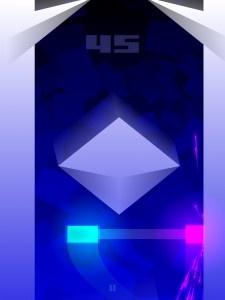


148Apps: What was the impetus behind bringing the Transport Tycoon back now in 2014?
Chris Sawyer (CS): The latest mobile and tablet platforms were perfect for the game with their power, high resolution screens, and touch screen interface. It just made sense to bring the game to these platforms.
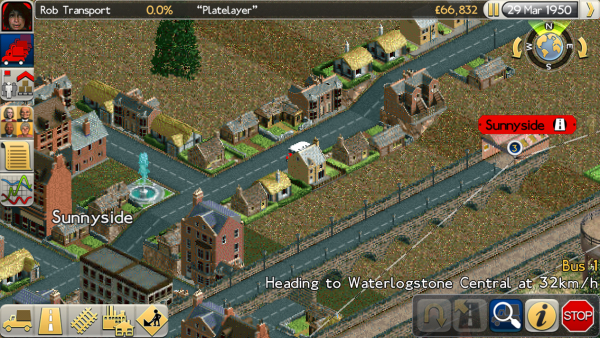
CS: We set out to keep the complex and detailed gameplay as unchanged as possible because that's what's at the core of Transport Tycoon, and the technology in modern mobiles and tablets allowed us to do that. We improved the user experience with the touch screen interface and enhanced display of the game world as well as other in-game information.
148Apps: What is the one aspect of the 1994 game market that you think 2014 needs?
CS: A reliable way for players to find the good games amongst the not-so-good. In 1994, the information about new games was quite limited, but also very thorough. By reading magazines, you could find out which games might appeal and which were worth spending money on. Nowadays, there are so many games being sold (or given away) and marketed in so many ways, it's very difficult for the good games to shine based on merit rather than clever advertising or social media manipulation.

CS: Back in 1994, there was only one way to publish games, which was selling boxed products through a publisher and distributor. Now there are dozens of ways of publishing games and most of them mean a more streamlined and cheaper distribution channel.
148Apps: Free-to-play is obviously a huge deal now, but Transport Tycoon has launched at a premium price. Why was this chosen?
CS:Transport Tycoon always was and still is a premium game. It is a game with considerable detail and depth of gameplay, and making it free-to-play with in-app purchases would have ruined the depth of the game. We wanted players to be able to become immersed in the gameplay and not be faced by frustrating restrictions or demands for payment while playing.
148Apps: Has the premium price worked out for the game?
CS: It is working out for the game, but it's proving a challenge as we're perhaps the first to try publishing such a detailed strategy game as a fully-paid app. We have also published a free Lite version with limited gameplay, which helps a lot too. The Lite version allows players to get a feel for the game before moving towards purchasing the full version. We've also found that keeping the game well-supported is important. The development team is continuing to fine tune and enhance the game with regular updates and support for players.
148Apps: iOS versus Android, what do you see as the biggest difference between the overall worlds of games on each platform?
CS: The main difference is the distribution model on each. iOS is considerably more controlled and streamlined and Android is less controlled, but each has their own benefits.
Thanks to Chris Sawyer for his time.

The genesis of Bush League came about when Hayhurst noticed that "There's no good baseball game out there that kind of trolls baseball. You have all these scandals every year, but you never to seem to have a game that has all these players and all the drama they get into. And it's such a big thing right now in Major League Baseball to get caught using steroids, right? I thought, why can't we just make a game where you have to use steroids to win, and just troll the entire industry? I'm kind of like a black sheep of the baseball world anyways, and I always have kind of shown the other side of it, I thought, this is a great premise for a video game. Let's make Candy Crush with steroids."
The hook to Bush League is in the way that it tries to parody baseball. Famous players and other figures around the sport both past and present are the opponents that populate the game, and their personalities and dialogue make light of things that, say, MLB: The Show or RBI Baseball 14 would never touch.
Hayhurst's unafraid to make fun of situations that he was involved in. There's one character, Purcey Tweeps, who parodies David Price of the Tampa Bay Rays. Hayhurst criticized Price's performance after a playoff game he lost, and Price insulted Hayhurst's playing career and said "SAVE IT NERDS.". Purcey in the game makes reference to social media and to the nerds comment. Everything is a bit crude and over-the-top, but meant to, as Hayhurst says, "troll baseball" and "[service] that idea that baseball takes itself too seriously and needs a good mocking every now and then just to keep things even."
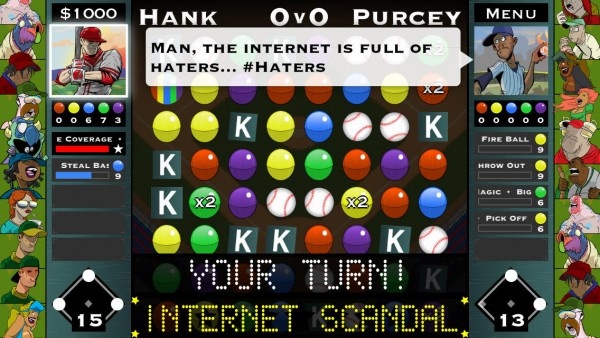
While Hayhurst financed the development of the game and his name is on it, he didn't just slap his name on it - he played an active role in development. "I was in charge of the art direction, the music direction... all the powers, I had to nest all the AI development, I had to decide the way it was going to look, the way it was going to feel, I had a say in all of that. At times I frustrated the guy doing the code, but it was a learning experience. And so there were things that I learned taking a shot at making a game that I never would have learned had I pursued a degree." Hayhurst says he realized his strengths were "the writing, and designing the characters and how the game should feel, and my coder had his strengths, which was taking all these wild ideas I had, parsing them down, teaching me the ropes, and making them work in the actual game.
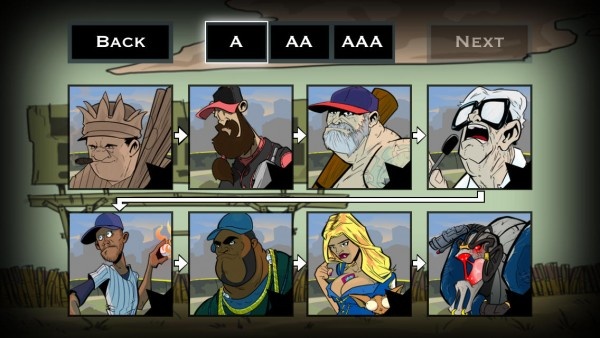
Hayhurst doesn't want Bush League to be a static product either: he wants to, over time, update the game to incorporate other notorious events and scandals as characters and powers. He says he would love to tackle other sports in a similar way.
But given that he's created this media career for himself, is Hayhurst afraid of the blowback that could come from this parody of the sport and its players that he's created? He says "I don't think of the church of baseball as some holy sacrament that everyone has to be reverential to, especially guys like me that didn't have long careers. This kind of stuff deserves to get picked on a little bit, because it's quite ridiculous when you think about it. I have always done that. And I understand because I'm in the sports entertainment field, I'm criticizing the sports entertainment field. I'm not criticizing these individual players, I'm criticizing the Franken-player that we've made out of them by knowing very little about who they are and taking what we know publicly and hyping it up, and turning it into something it isn't. That is what I've always done, and that's what got me on TBS and ultimately keep it from it at some point, but that's who I am, and that's the style that I like to work in."
Thanks to Dirk Hayhurst for his time. Bush League is available now.

It's an app that's part of a smart file management system that can grab your digital statements, bills, and other important information for you, before filing it all away safely for later reference. Supporting over 300 different account connections and a Smart Labels system sure to make it easier to organize things, it should be an ideal solution for those keen to have a paperless life.
With FileThis having been in development for the past couple of years, we were able to have a chat with CMO, Martin Stein, to learn more about why you should pay attention to this service.
148Apps: What was the inspiration behind the service?
Martin Stein (MS): FileThis is based on a personal experience of founder and CEO Brian Berson. He and his brother had to move their mother to an assisted living facility, where they were overwhelmed by working through 20 years of her paperwork. Brian realized that while living in the 21st century, in a digital world, we all are still faced with a lot of paperwork. Even worse, some documents are available digitally and some documents come to us in the mail in paper format. Important information is scattered all over the place.
The idea behind FileThis was to give the control back to the consumer: to help them save time with their daily paperwork by getting all their statements automatically and storing them where they want, not leaving them scattered around the web, or on bank or insurance websites. That’s why FileThis is a digital mailbox and filing service - much more than just a digital filing cabinet.
FileThis is about saving time and convenience: in order to automate the process as much as possible, we developed features such as email check-in, FileThis Drop (a dropbox style folder on your desktop), or our iPhone app that lets users take photos of receipts or documents and turn them into PDF files within the FileThis Cloud. FileThis is about freedom of choice. We let our customer decide where they want to store their data.
FileThis is also about privacy. Because our product is a freemium service, we depend on upgrade sales based on connections and don’t mine or resell customer data, and never will. That is an important differentiator between us and other “free” services.


148Apps: Given the amount of sensitive information involved, how secure a service is this?
MS: FileThis is a read-only service that uses bank-level security (256-bit encrypted data and communication). We also apply bank-level security practices besides encryption: this includes auditing, logging, and back-ups. We utilize third-party services to test our service for security issues – including scanning our ports, testing for SQL injection, and many other potential security weaknesses. We have also received the Verisign security seal as well as the McAfee Secure badge.
148Apps: Are there any plans to expand to other countries?
MS: With fetching and delivering digital statements at the center of the service, we are focused on the US market at this time. But, we will let you know when FileThis expands to other markets.
148Apps: Are there any other plans for expansions or new features that you're able to divulge?
MS: The FileThis app for iOS has just been released. With first maintenance release from last week we improved the image capturing and added a flashlight mode.
Thanks to Martin Stein for taking the time to answer our questions. FileThis is available now from the App Store.
Rather impressively, FileThis is free to use for those who want to use up to 6 account connections with updates running once a week. For those who want a more powerful service, they can opt to pay $2 per month for up to 12 connections or $5 per month for up to 30 connections, as well as a daily update. That sounds like a pretty good value for the money to me, thanks to its timesaving potential.
Learning is so much more rewarding when it's also fun. That's part of the reason why recent educational app, Grammar Pop HD, garnered such a positive review from us last week. The brainchild of Mignon Fogarty, otherwise known as Grammar Girl, we were lucky enough to have a chat with her to find out more on how the game, as well as the persona, came to be.

The name Grammar Girl just popped into my head and I knew it was perfect right away. I believe it works because of the alliteration and because "girl" is a nonthreatening word. People have a lot of anxiety about their writing, and a lot of the grammar advice out there is delivered in a high-brow or condescending way. Being Grammar Girl sends the message that I'm friendly and approachable.
148Apps: How did Grammar Pop come about? What was the inspiration for creating a game like this?
MF: After finishing my last book, I wanted to do something different. People were playing games on their tablets and phones - I was playing games on my tablet and phone - and it seemed obvious to me that there should be a game in which you match words with their parts of speech. In fact, I was incredulous when I looked for such a game and found that it didn’t exist.
So on a plane on my way to Macmillan for a different meeting, I sketched out the initial idea for how I thought the game might work. They wanted to do it, so we went about investigating ways to make it work. I ended up coding it myself with a tool called Game Salad and working with Margo Goody, an artist at Macmillan.
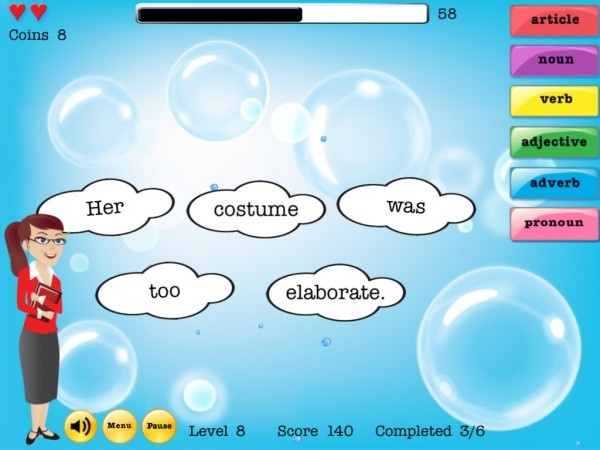
148Apps: What has the feedback from players been like?
MF: I get great feedback from parents and teachers who use Grammar Pop and say it has really helped their kids learn parts of speech. It's not a chore to get their kids to play it; the kids love it and learn parts of speech without even realizing they're learning.
148Apps: What's next for the Grammar Pop series of games? Are there any plans for new installments or updates?
MF: We came out with a special Winterfest edition for the holidays, and we're getting bids right now to expand the game with more levels.
Thanks to Mignon Fogarty for taking the time to answer our questions. To find out more about Grammar Girl, check out the Quick and Dirty Tips website.
Grammar Pop is available now for iPhone and iPad.
(Image of Mignon Fogarty courtesy of Quick and Dirty Tips.com)
First off, they say that they wanted to put together a cohesive game experience that players could just sit down and enjoy. "We really wanted to put together a game that didn't have an energy mechanic... or any social pay walls, because we really wanted to deliver a great experience with players... you could buy this game, and if you wanted to just punch through the game in one sitting, ten hours, twelve hours, whatever it takes you, you can do that. You don't have to wait for status bars to refresh or invite five friends to pass this gate. And we think that the gamers that want this game will really respect that, and I think that the price point supports that."

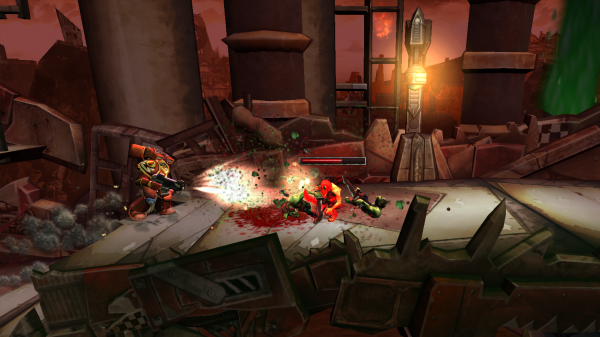
"So fine, we understand that. But I think there's also a big chunk of gamers, who when we look at the Warhammer 40,000 audience, they are gamers. And we have a lot of people in that are who are interested a full experience, without being limited to playing for six minutes. So we didn't want to limit it in that way."
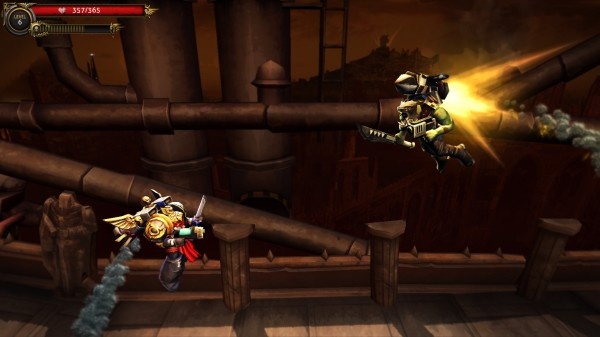
But ultimately, while Roadhouse is taking a different path for the company with this, they say "We're not [saying] go kill free to play. It's absolutely a viable business model, there's lots of reasons to do it in lots of cases. But in this case we've chosen a different path and one we believe is very viable."
Warhammer 40,000: Carnage is expected to release this May for iOS and Android. Thanks to Roadhouse for their time.
Sometimes it doesn't feel that great to have made a correct prediction. One of those times is last month when I questioned just how the developers of cute endless runner, Tanuki Forest, expected to make any money given its very friendly nature towards encouraging one to buy any in-app purchases.
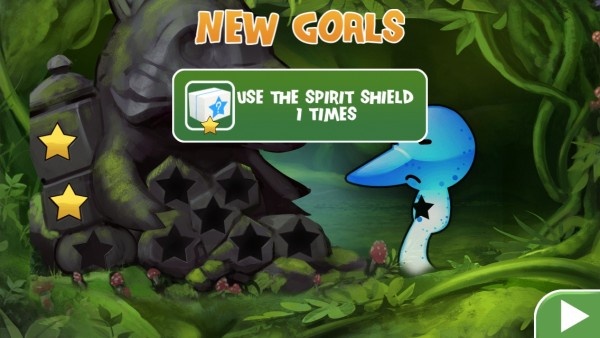
148Apps: What do you wish you'd done differently with Tanuki Forest's initial release?
Jake Gumbleton (JG): If we were doing things over we would research F2P a lot more carefully and had a more informed decision about the relative merits of indie premium vs F2P monetisation. As you (and a few others) pointed out in your review of TF, the game was very unaggressive with its freemium monetisation. It basically never asks you for money and everything in it can very easily be acquired without ever spending actual money. We went free so that we would have no barrier to entry and achieve the largest possible amount of players. We hoped those players who loved the game would buy the currency doubler as a thanks. This behaviour is true of forum users etc. but maybe not so true of the wider, more casual games player.
148Apps: Did you consider adding more intrusive in-app purchases at any point?
JG: Not pre-release, no. We really did not want to taint the experience of Tanuki Forest. The game has an immersive, absorbing style and we did not want to harass players to make purchases. After the hard truth of seeing that the game was basically only going to make enough money to buy us lunch we, of course, discussed potential changes and improvements to the in app purchasing.
We would never want to take our games to a very aggressive place with monetization but I do think there is a lot of potential to improve the ‘retention game’ of Tanuki Forest. We have consulted a few F2P experts and have a list of things that we would love to implement in TF that would give the players much more reason to return to the game for more from one play session to the next.
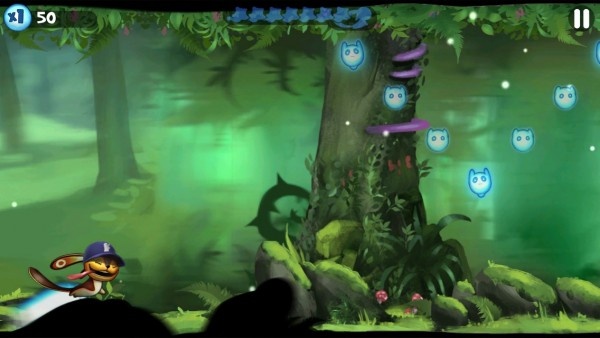
148Apps: Why did you opt for $1.99 rather than $0.99?
JG: Two reasons: to give us room to go on sale if we want to at a later date and also, in my reading up of F2P monetisation since release, I have read a few times that at the low end of price points it makes very little difference to the number of purchases that get made. The difference in units bought at $0.99 or 1.99$ is pretty negligible. $0.99 does not have the relevance that it did before the dominance of free games since there are so many free games now.
148Apps: Have things improved financially yet?
JG: We are making more money than we were as a free app but still virtually nothing. The big problem now is that Tanuki Forest has dipped in to obscurity just like all apps do after a few weeks on the app store if they don’t go viral. All of our coverage through reviews etc. happened while we were paid. Once an app dips in the charts it submerges in the million other apps and that’s pretty much that!
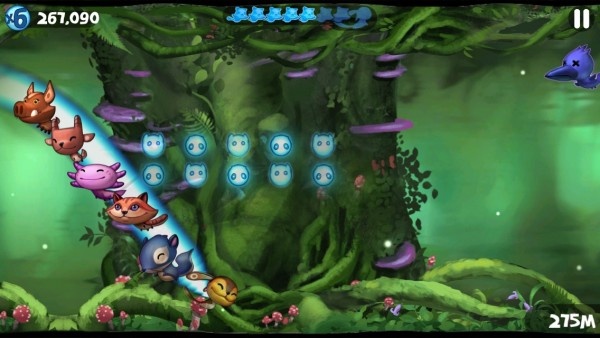
148Apps: What do you think you've learned for future titles?
JG: To push ourselves to have enough originality and content to ensure we can confidently go indie premium up at $5 or so. If Tanuki Forest had been something bigger than a runner we would have just gone the indie premium route straight off the bat. Our next game will be more original and idiosyncratic of us as developers and we will ensure it has enough content to be a real premium indie app like Sword & Sworcery et al.
148Apps: What do you think of the App Store economy? Does it work for developers or is it a consumers' market?
JG: It works just fine if you are Supercell! As a small developer unless you go viral or make a masterpiece then you are in a pretty impossible position. Obviously the guys at the App Store submissions department must face a deluge of content every day. From their point of view I can see why they go for more known quantities. The only games that break the trend and get the features are pretty much the very best games. So my rather obvious advice to indie devs out there is to make sure your game is utter brilliance.
To learn more about the making of Tanuki Forest, check out our earlier interview with the team.
Game creation is not easy. Edmund Koh and Personae Studios want to change that with the upcoming PICS Tower of Defense - a way for players to make their own tower defense levels, and eventually their own tower defense games, as a way to lower the barrier that comes between having an idea for a game, and actually creating it.

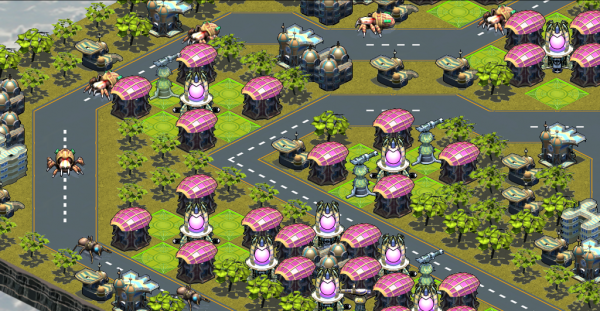
Koh says that, "With game development, essentially what you're doing, most of the time, you're just guessing what the audience wants... the approach that we're taking is that we're gonna ask people what do you want, and let them do it."
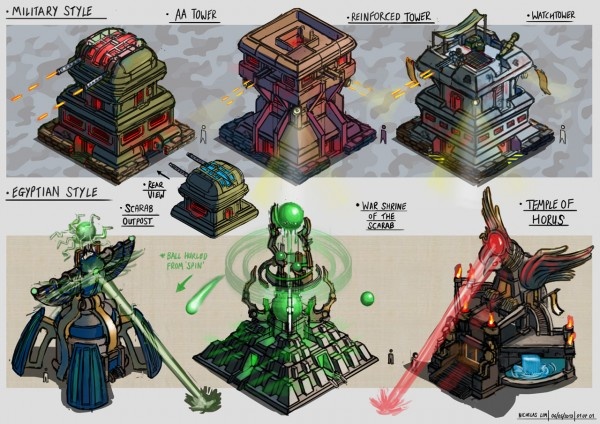
The way that PICS Towers of Defense intends on making money right now is through theme packs for levels and towers: the game is expected to be a free download, but additional theme packs will be available as in-app purchases, and there is talk of crossovers with other games to get theme packs into this creation tool. Koh says, "We want this to be more of a community-driven platform where people could write in suggestions on what kind of theme packs that they would want to see, and we'll try to create it for them."
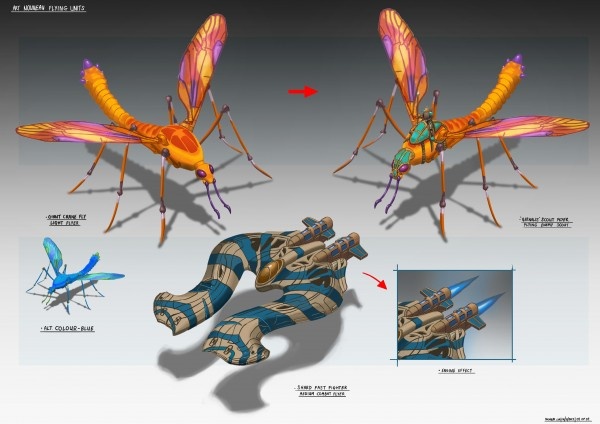
We at 148Apps can't help but be fascinated by new developers - particularly new developers who have struck out alone, stepping away from their AAA development days. After all, it's a big risk so they deserve some attention, right? One of the latest teams to arise from such creative bravery is Mighty Mill: a UK based 2-man and a bit team made up of James Trubridge, director; and Jake Gumbleton, art director; with help from Leavon Archer for sound and music. With plenty of experience under their belts, they've just released their first title, Tanuki Forest, so we felt this was the ideal time to learn more. Jake was all too happy to answer our questions.
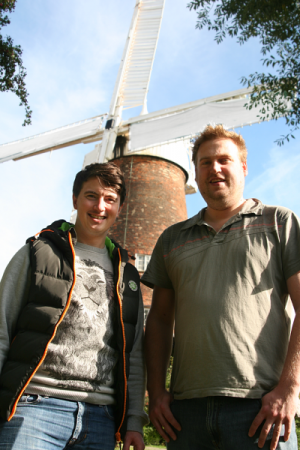
We also wanted to be there to see our kids grow up. We read somewhere that most men’s dying wish is that they had spent more time with their kids when they were young. We both have children that have been born during [the] making [of] Tanuki Forest. Mighty Mill hopefully allows us to be with them when it matters the most in those early years. We get to play with our kids and experience all their firsts while still making our business work and grow for us.
148Apps: Where does the name Mighty Mill come from?
JG: We are based in Long Eaton near Nottingham, England, and the place used to be a big textiles town so it is full of mills. Naming a company is harder than making games. The mills in Long Eaton are not actually windmills, but shhhhhh!
148Apps: How did the idea for Tanuki Forest come about?
JG: Tanuki Forest has shifted a great deal since we began on it. It actually started as a brave experiment in asymmetrical multiplayer on the iPad but in the end it just was not fun enough. The aesthetic of the game comes from my fetish for Japan and Studio Ghibli in particular. A few years back I was lucky enough to go to Japan and visit both Nara and the Ghibli museum. It all had a big impact on me, which really came out in the aesthetic and feel of Tanuki Forest. Nara is so brilliant. The deer there have free reign. My wife and I had breakfast in our room one day with deer munching on the grass outside the open window. It was amazing.
I love character design and wanted to develop a main character who was super appealing. I still do not know what he is exactly.

148Apps: What challenges did you face during development?
JG: The hardest challenges are the decisions where you have little expertise but the results will make or break the success of the game. Our two hardest things to decide were: do we go with a publisher, and should the game be paid or free. We have opted for no publisher and to go free.
Tanuki Forest is very charming and quite understated for an infinite runner, and although our revenue will have to come from IAP we have nothing to aggressively drive this in the game. Our sincere hope is that people who love the game will spend a little money in the shop. This decision was so hard for us to make as F2P has a real stigma to it for an indie dev. I hate games that constantly bug me to buy stuff! In the end we felt that it was the right way to go for Tanuki Forest as it is an infinite runner. Larger future projects will probably be done on the paid model.
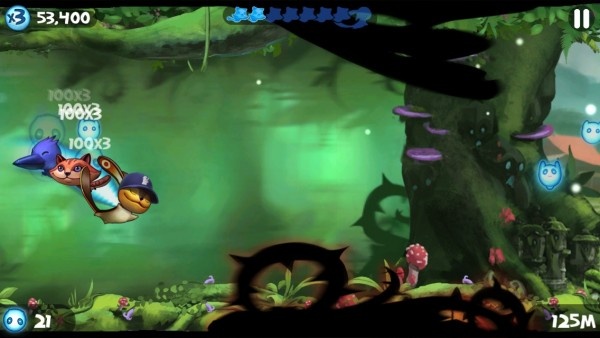
Thanks to Jake for taking the time to answer our questions. Tanuki Forest is out now and is free to play. There really is no reason why it's not worth downloading, as it is rather charming.
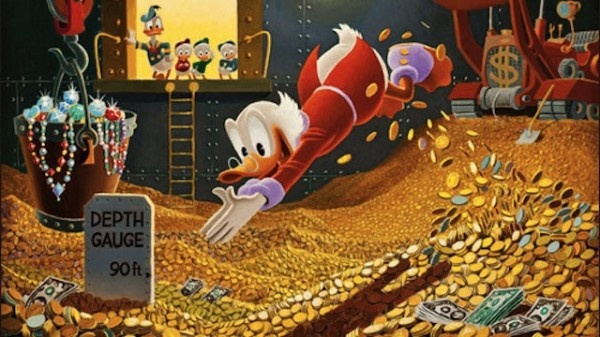
The recent Dungeon Keeper debacle is a good example of this. Gamers and critics alike have railed against it for using various monetization techniques and associating itself with the classic PC strategy series, and many point to it as an unpleasant indication of where the video game industry (especially mobile) is headed. It’s an issue that’s almost as complicated as the initial Freemium vs. Premium debate; so let’s take a closer look at everything and try to make sense of it all.
Galaxy on Fire - Alliances and its developer, Fishlabs, have been through quite the tumult over the past few months. Fishlabs went through financial trouble and was eventually acquired by publisher Deep Silver, a rising force in the gaming industry known for publishing Saints Row IV and the Dead Island series. Throughout it all, Galaxy on Fire- Alliances has been chugging along: beta tested and released among these turbulent times, the game is now available worldwide and just received a big content update. Kai Hitzer, Marketing Director at Deep Silver Fishlabs took the time to answer some questions about the game's unique approach and development.
148Apps: Alliances seems to start up a lot slower than what many free-to-play games do: it has a very lengthy and involved tutorial, and doesn't get into the bulk of the game for some time. Was this a purposeful design decision?
The save home system, which can neither be seen nor attacked by other players, constitutes another important element of the starting phase of Galaxy on Fire - Alliances. To make sure that all players have enough time to become acquainted with the game, we’ve made sure that everyone’s got a secure resort from where they can plan and execute their operations at whatever pace they prefer. Once you’ve mastered the first couple of steps successfully and feel well-prepared for the next round, all you need to do is open up your jump gate and start your endeavors in the “real” galaxy. But even then you will not abandon your home system, but you will still keep it so that you can continue to build it up and use it as the centre of your dealings and ventures.
148Apps: Alliances, with its complexity, feels very targeted to a core gamer audience. Did you feel like this segment was being underserved on iOS?
KH: As a company that’s always been eager to bring truly immersive gaming experiences to mobile – in terms of graphics as well as in regard to the depth of gameplay – we have been catering to a rather hardcore-oriented user base for years. And Galaxy on Fire - Alliances makes no exception here. We’ve always said that we wanted to show with GOFA that it is indeed possible to bring free-to-play and hardcore gameplay in accordance with one another. And we still stand by this claim as much as we did when we first proclaimed it.
With mobile devices becoming more and more powerful and capable month after month, we believe that the number of people who want to play demanding core games on their smartphones or tablets will continue to grow constantly. When you’ve got a device with you 24/7 that’s capable of running apps in current-gen console quality, why would you want to use it only to play titles that look and feel like browser or flash games from 10 years ago? Don’t get me wrong, pretty much everyone here at Fishlabs is totally enjoying their occasional dose of casual games as well, but we still believe that there’s more to the mobile platform than just endless runners, match-3s, and physics games.
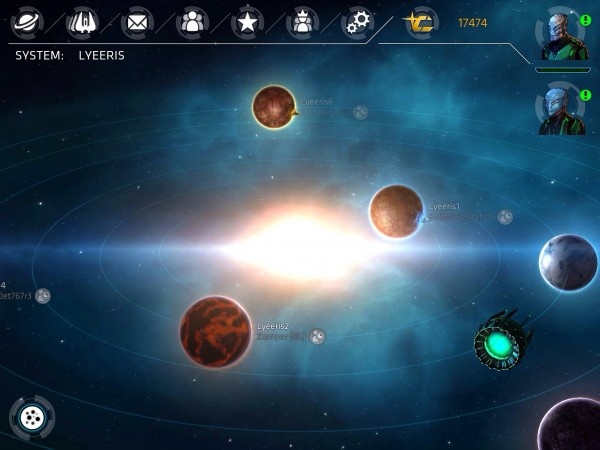
KH: As said earlier, one of the beauties of Galaxy on Fire - Alliances lies in the fact that the players can decide for themselves how they want to play it. If they’re looking for a challenging, deeply engrossing hardcore gaming experience, they can join an ambitious alliance (or even form their own alliance) and closely interact with others to constantly widen their reach and fortify their dominion. When you choose to play the game like this, you will be able to coordinate large-scale attacks with dozens of fellow players, command backup troops to secure strategically important positions, carry out feint assaults to throw your enemies’ defense line off balance and actively participate in a vivid community of aspiring star base commanders.
But if you want play a bit more light-hearted and easy-going, you can also stay in your private instance a little longer and then, when you leave it, colonize a couple of planets outside of the areas of war and conflict. There you should be able to progress in a relaxed but steady manner and build up your empire without much interference from pushy players or hostile alliances. So at the end of the day, it’ll be entirely up to you - you can spend 10 hours a day, 10 minutes a day, or anything in between playing Galaxy on Fire - Alliances and you’ll always experience meaningful gaming sessions and make reasonable progress.
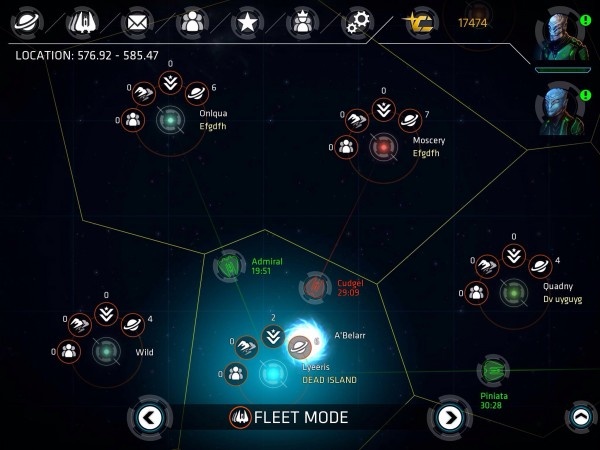
KH: Personally, I don’t think that F2P mechanics themselves bug the core players, but rather the bad implementation of said mechanics. A lot of games still focus on monetization first and gameplay second. For us, those two aspects have always been on par and we’ve tried our best to bring them in accordance with one another. There’s no denying that we have to sell in-app purchases at one point or another in order for GOFA to become a success. But at the same time, we also want the game to be fully accessible and fun to play regardless of the amount of money you invest.
The formula’s simple: on the one hand, players should be able to undergo a challenging, engrossing, and exciting gaming experience even if they never buy a single in-app purchase in Alliances. But on the other hand, they should also not become invincible overnight just because they spent a hundred or even a thousand dollars on credit packs and limit extenders. Therefore, we’ve set various rules and regulations that make sure that paying customers can indeed proceed faster than non-paying customers, but only to certain a extent. The general rule of thumb is that two non-paying players, who team up and support each in their attacks and defenses, will always be able to stand up to one heavy spender.
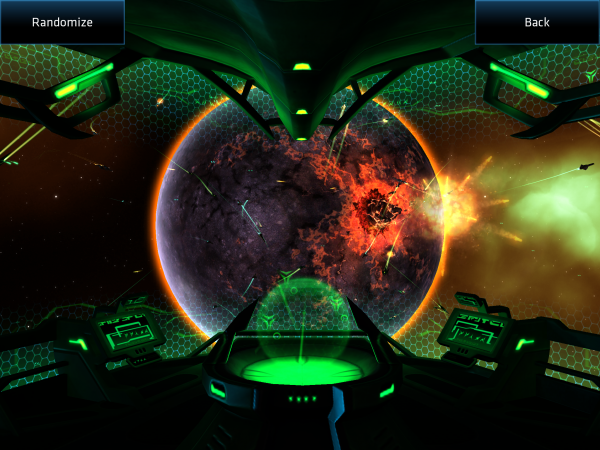
KH: Listening to our fans has always been at the heart of our efforts, and the closed beta has been of tremendous help for us, providing tons of useful and insightful user feedback over the months. From update to update, Galaxy on Fire - Alliances has gone through dozens of severe changes in all crucial areas, such as game design, balancing, usability, and performance. By evaluating data from the closed beta, we’ve not only been able to fine-tune important aspects such as structure building times, commander level-ups, and mission rewards, but we’ve also been inspired to add all-new features such as carrier names, leaderboards, and structure take-overs. And, of course, the closed beta has also helped us to locate and fix quite a lot of bugs and other issues as well.
Thanks to Kai Hitzer for his time.
One of the finest things about app development is how it opens things up to more than just major studios keen to develop an idea. In increasingly dicey times for those reliant upon others for employment, it's a particular boon to see and some great ideas can come out of tricky times.

More is explained on Leanne's blog but Alex was also kind enough to take some time out of his busy schedule to answer a few questions.
148Apps: How did the idea for Glyph Quest come about?
Alex Trowers (AT): Glyph Quest was originally a side project for us to tinker about at home while Leanne was out of work. I was a big fan of Dungeon Raid's tactile dragging interface (and, more recently, Puzzle & Dragons). Also, I enjoyed the RPG-esque trappings of 10000000. So we kinda threw the rest together. We're both firm believers in emergent and evolutionary gameplay rather than designing something up front and just implementing it, so a lot of the features we added were very much developed on the fly.
148Apps: How different did you find it going from working as part of a team to a much smaller operation?
AT: The amount of freedom afforded to you as part of a tiny team is fantastic. We put whatever we wanted in to the game as there were no people further up the chain with the power of veto. That's why you'll find plenty of references to all sorts of things scattered throughout and it's those little touches that i think help us to stand out. In addition we really didn't take ourselves or the genre too seriously. Of course the downside is the lack of resources. Glyph Quest was nowhere near as polished as it could have been come launch and things like our lack of config test or thorough QA were easy to call out. Another thing to consider is that while it's great to have all of that power and control, it does rather mean that the buck stops with you and if it all goes horribly wrong, there's no-one else to blame. It's exciting stuff really.

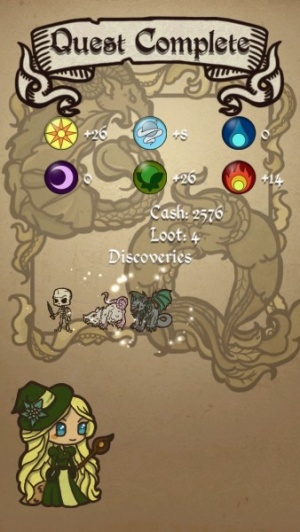
148apps: You've written extensively about issues with the iTunes submission process [as well as the development process]. How would you improve it?
AT: The iTunes side of things was always pretty simple. Convoluted in places, I guess - particularly when it came to IAPs - but the level of documentation and support available went a long way to mitigating that. The main place where things fell over were with XCode and my own complete lack of knowledge about it. Knowing which menu to find the relevant option to enable or disable some game-breaking feature was an exercise in the arcane. A friend and old Bullfrog buddy of mine postulated that you need this barrier to entry in order to ensure that the platform is secure and I kinda agree with him.
148Apps: What do you plan to do next? Besides enjoy fatherhood!
AT: Next? Well, the success of Glyph Quest has taken us completely by surprise so we're coming under increasing pressure to 'fix' issues with the first one or perhaps start looking in to a sequel. The plan was always to make Glyph Quest in order to fund a Kickstarter campaign for something much bigger. I'd still very much like to do that, but another Glyph Quest game makes an awful lot of sense. Then again, Sproglet was born at midday today, so I guess all bets are off and the thing I'd like to do next is sleep.
Huge thanks to Alex for taking the time to answer my questions and congratulations to him and Leanne on the arrival of their baby. Proving to be quite the inspiration given how much they've overcome in recent times, it's the ideal time to try out Glyph Quest, available now on the App Store.
148Apps aims to bring you the most interesting iOS games and talks with the most interesting developers, all streamed live on our Twitch channel. This is 148Apps Live!

Watch the recap of the entire show here:
[twitchrecorded 499238055,148apps]
As well, you can watch highlights from the show below:
The first level that proved to be a real hindrance was 1-7, Double Cross. After a few attempts, I got some helpful attempts from Arash to try and topple the alien menace:
After beating a few challenging levels in a row, I was feeling confident, so Arash challenged me to tackle Invasion mode on level 1-9, Serpentine:
Following the surprise release of TowerMadness 2 last week we thought it was the ideal time to find out more about Limbic Software's latest title, learn about some of the design process behind it, and discover just how it came to be. What better font of knowledge than that of Co-Founder and CEO, Arash Kesmirian? We caught up with him to find the answers to our questions and more.
![]()
Another big departure from the original was our emphasis on adding characters to the game. So far there are two – Bo, a brave ram that defends your sheep against the first intruders into the flock and helps beginning players, and Xen, an old, wise, friendly alien that runs the tower laboratory to help you defeat the evil aliens. His motivations are unclear. We spent a lot of time making them come to life with dialogue and sophisticated animation. Our hope is to connect players with the game’s world in a deeper way than before, and we added some little surprises to this effect too, like funny descriptions for all the alien types:
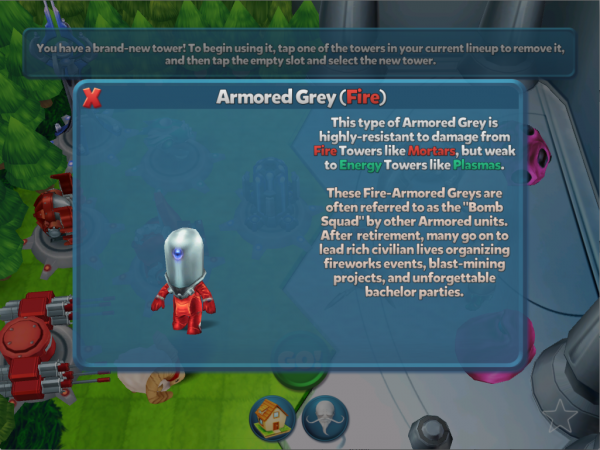
We did have a few “false starts” with TowerMadness 2, though. We’ve gone through a fair number of rejected design doc ideas that we ultimately decided would be too different, hard to play, or just not that fun. It took a long time to find a vision that worked. About nine months ago we cracked it, and set to work building TowerMadness 2.
148Apps: How has the evolution of iOS since the first game changed the development of TowerMadness 2?
AK: The Apple Xcode tools we use to develop our games have been consistently improving over the years – but specifically for iOS, we’ve enjoyed leveraging a lot of new iOS features in TowerMadness 2. For one, we’re making full use of iCloud to let players carry their progress with them from device to device, and ensure nothing is ever lost. Since people tend to invest a lot of time in TowerMadness, this was really important to us. A bit more on the technical side, we’re leveraging a lot of new “under-the-hood” iOS features to provide the graphics and animation you see in the game.
Tower defense games in general are a challenge performance-wise because you have a lot of characters on screen that need to be drawn, animated, and run AI. Our custom engine leverages a lot of iOS optimizations to make this fast and keep framerates solidly at 60fps on modern devices. It screams on A7. As far as experimental features go, I really like playing on the TV with Apple TV and Airplay, so we added iOS controller integration to the game. It seems a bit odd for a tower defense to do this, since it’s quite well-suited to touch, but I think it’s a neat experience on a big screen with a controller and a few friends watching.
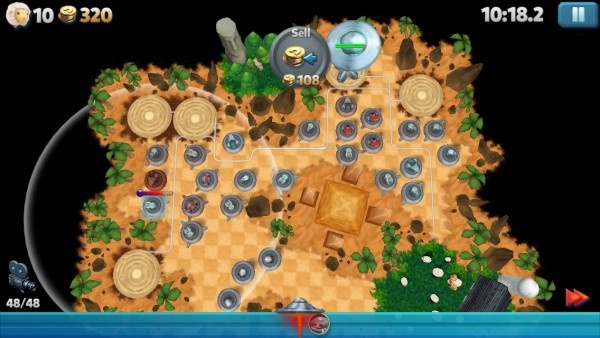
148Apps: Tower Defense games run the risk of being samey, what makes TowerMadness 2 stand out from its predecessor?
AK: There are a few things that make TowerMadness and TowerMadness 2 unique. The first major aspect is the free-grid style of tower defense gameplay, which really opens the game up to strategic placement of towers and sophisticated tactics. We combine this with a vast array of tower types and alien types, making each level and each round really different in terms of how the waves play out. We’ve added some interesting gameplay mechanics when it comes to environments, with towers overheating and freezing in different climates. I hope to expand on that in future versions.
Another core aspect of the original TowerMadness was the competitive leaderboards. In TowerMadness 2, we’ve streamlined the score dynamic into a simple level time. If players can send and defeat waves more quickly, they’ll finish the level with a shorter time. We use Game Center challenges to facilitate grudge matches, and this has been a big hit with our team internally.
148Apps: How did the idea of using sheep in both games come about?
AK: When Volker, Iman, and I created the first TowerMadness, we originally had concepted it as being cows. I have some limited 3dsmax skills [and] was responsible for all of that game's artwork. The problem was, I had no idea how to make cute-looking cows. I did have some theories about making cute sheep, though. So I built this guy, and he stuck:
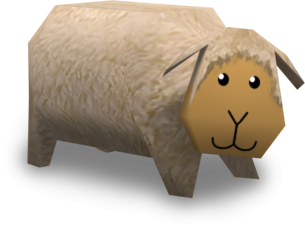
Today, with the talents of our Art Director, Lee, we have a much nicer-looking flock...
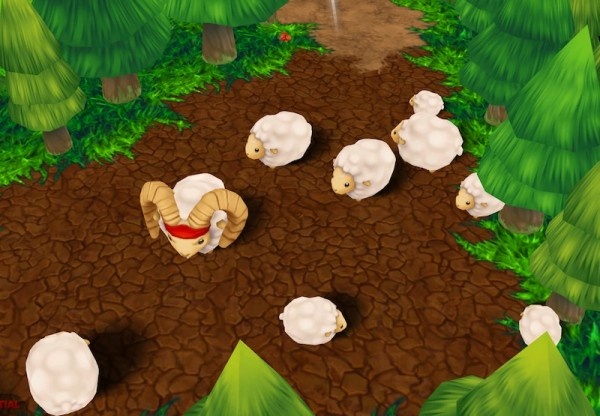
Plus, I think it makes a much better story that the aliens are trying to abduct the sheep to knit their emperor a sweater (it was a scarf in TM1). What would they do with a cow? Milk? Steaks? The aliens don’t have mouths, and invade completely unarmed... For all we know, they might be vegetarian pacifists!
148Apps: Thanks for your help and time in answering these questions
AK: Thanks for having me. We’re really excited to finally get this out in the hands of players, and we can’t wait to see how the game grows as it evolves.
TowerMadness 2 is out now, and on sale at $2.99 (usually priced at $4.99). The original TowerMadness is also available for those keen to catch up on past hits.

148Apps:You’re an artist for a large variety of comic books titles; what made you decide to venture into video game design and has it been an eye-opening experience from what you are used to?
Steve Uy (SU): I believe every comic book creator, at one point or another, wants to make a video game, and every video game guy, if they could, wants to try out comic books. At least that's always been my experience when I talk to the two groups in conventions, so I’m not really unique in this desire, just in the fact that I actually did it. Everyone has the grass is greener attitude when it comes to the medium.
With comic books, I'm in charge of everything, and the end result is limited only to my deficiencies as an artist. I've created worlds for over a decade in a sequential medium, and Oasis is the first step in allowing people to be an active participant in a world I have created. With games, however, the size of the world is limited by things such as budgets so there are still restrictions to what I can do.
As for eye-opening experiences, absolutely! I originally thought Oasis would take 3-4 months to complete, but it took us 9 months and still counting with the android build coming! The game may look small in size, but getting every bit of code right, making sure every single animation frame played at the right tenth of a second, making sure the jump arc and knock back animation and dash speed was right to the exact pixel - those are things that I have always taken for granted. I can't say enough what a great job my programmer, John Garrison, did to make everything as polished as it came out to be. Oasis turned out to be much deeper than I ever expected and I'm still learning new combat tricks with every new update.

Oasis may be called a runner because the main character runs automatically, but that's just a game design decision I made to simplify controls, much like how SHMUPS have auto-fire built in. Take everything Oasis has to offer and it's more similar to a side-scrolling console fighter - albeit far more simplified of course - complete with counters, footsies, and combo delay attacks.

The first thing I thought of when coming up with a story for Oasis was that I didn't want it to be like everything else out there, full of in-your-face fun and joy and awesomeness. This game, from start to finish, is bittersweet, melancholic. Every stage shows a little piece of the story in illustrated cutscenes. But those scenes had to be concise and to the point; they had to MATTER to the player without preaching to them. They had to be worth fighting for. This is the story of the last man left in the world trying to revive it just so he can see his lost love again.
If I were to describe Oasis, I’d say it was a cross between Journey, Shadow of the Colossus, and Ninja Gaiden.
148Apps: Are there still plans for the release of World Without End? Can we look forward to this beautiful game gracing our iOS and Android devices anytime soon?
SU: To be on the safe side, I can't make any promises for sure until we know how Oasis fares in the market and we see if we have money to pay the bills. But it's definitely on the top of me and my programmer’s list of priorities.
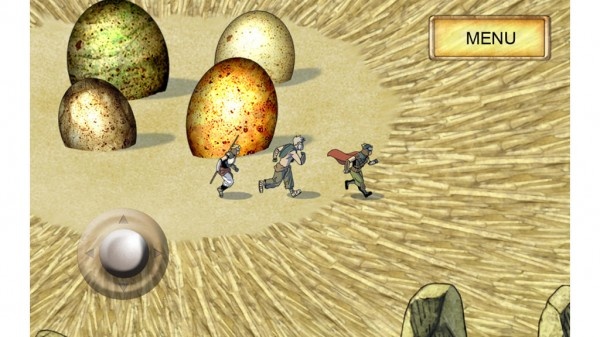
For the future, I would like to be able to make a Metroid-style game someday but touch controls right now are the biggest limitation, and directional onscreen controls used simultaneously with onscreen buttons are definitely not good enough for me.
That said, the engine for Oasis opens up a whole new world for us. If we were to make sequels it would be redesigned in structure. No more looping worlds, probably permanent checkpoints, bosses, air combos - it would be more of an adventure game than a battle runner. I would use everything we made to release a more polished, deeper game, but I have no desire to make the same thing twice.
148Apps: Can we expect more of your beautiful handiwork on our iOS devices again anytime soon?
SU: We're still working on the android versions of Oasis right now, and we'll probably release a Lite version for iOS later down the line. There are definitely things I want to continue with so it comes down to either Oasis or World Without End depending on how sales go. Obviously, the best way to help make that happen is to buy the game, or my comic books in ComiXology. And of course, keep tabs on my website for any updates.